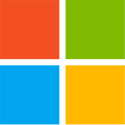
MSI's Modern AM272 Series All-in-One PC be Your Trusted Partner for Business
MSI, a world leader in high-performance and innovative computing solutions, announced the Modern AM272 Series All-in-One PC featuring the latest software that can improve your productivity and security. Eye care and ergonomic design with an IPS panel which brings a wide viewing angle and enhanced viewing experience, Modern AM272 series are designed with efficiency and productivity in mind.
With a glorious design, Modern AM272 Series is designed to fit your lifestyle. The two colorways can fit in any corner well no matter in the office or at home. Not only the attractive appearance but the powerful efficacy also support your efficiency. Featuring up to 12th Gen Intel Core i7 CPU and Iris Xe Graphics, you can edit your video, graphics, and multi-tasking with various programs smoother and faster. In addition, the instant display function which allows you to add another monitor, and the MSI Center app with customizable A.I. functions enhance the flexibility of work.
With a glorious design, Modern AM272 Series is designed to fit your lifestyle. The two colorways can fit in any corner well no matter in the office or at home. Not only the attractive appearance but the powerful efficacy also support your efficiency. Featuring up to 12th Gen Intel Core i7 CPU and Iris Xe Graphics, you can edit your video, graphics, and multi-tasking with various programs smoother and faster. In addition, the instant display function which allows you to add another monitor, and the MSI Center app with customizable A.I. functions enhance the flexibility of work.







































































